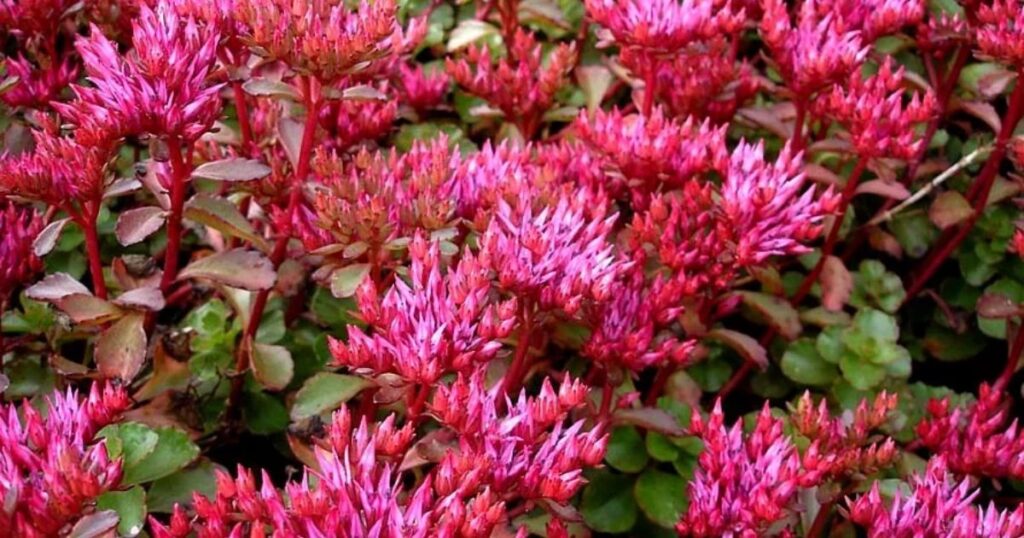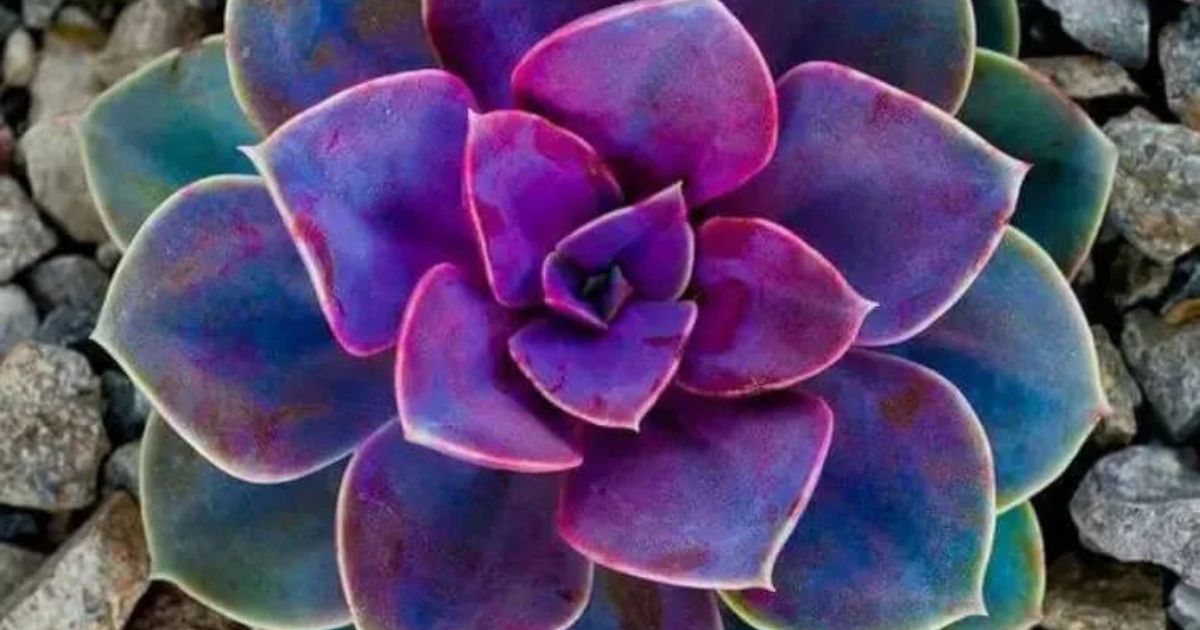Succulents, known for their water-storing properties and distinctive appearance, are favored by many as resilient and low-maintenance plants. When we refer to “My Succulent Shriveling,” we are addressing the concerning phenomenon where these hardy plants start to show signs of wilting or dehydration.
Why is my succulent shriveling? This question echoes the concern of plant enthusiasts who suddenly observe their once vibrant succulents losing their plumpness and vigor. The answer lies in a delicate balance of environmental factors, watering routines, and overall plant care.
The phenomenon of succulent shriveling is often linked to improper watering practices, exposure to extreme temperatures, or issues with soil drainage. Succulents thrive in well-draining soil and are susceptible to overwatering, which can lead to root rot and subsequent wilting.
Under-watered Succulents Cause Leaves to Shrivel
Underwatering is a common culprit when it comes to the shriveling of succulent leaves. Succulents, adapted to store water in their fleshy leaves, require a delicate balance of hydration.
When deprived of adequate moisture, the leaves begin to lose their plumpness and turgor, resulting in a visibly shriveled appearance. It’s essential to establish a consistent watering routine, allowing the soil to dry out between watering sessions to prevent the detrimental effects of dehydration on succulents.
Insufficient water intake disrupts the succulent’s natural processes, hindering its ability to maintain optimal cell structure. As the cells lose water, the leaves shrink and wrinkle, signaling the plant’s distress. To revive an under-watered succulent, thorough watering is necessary, ensuring the soil absorbs moisture and rehydrates the plant.
Monitoring soil moisture levels and adjusting watering frequency based on environmental conditions can prevent succulent leaves from succumbing to the undesirable effects of dehydration.
Overwatered Succulents with Wrinkly Leaves

Contrary to popular belief, overwatering is equally detrimental to succulents and can manifest in the form of wrinkled leaves. When succulents sit in waterlogged soil, their roots suffocate, leading to root rot and compromised water absorption.
The excess moisture prevents the plant from efficiently regulating water intake, causing the leaves to appear wrinkled and lacking vitality. Recognizing the signs of overwatering, such as mushy or discolored leaves, is crucial for adjusting care routines promptly. If you’re wondering how long to bottom water succulents, it’s important to ensure that the water reaches the roots without leaving the soil waterlogged.
Typically, allowing the pot to sit in a shallow tray of water for about 15-20 minutes allows the roots to absorb the necessary moisture without the risk of overwatering. Adjusting the duration based on factors like pot size and soil type can help tailor the bottom watering process to the specific needs of your succulents, promoting a healthier and more balanced moisture level.
To address overwatering issues, it’s imperative to assess the soil’s drainage capacity and choose a well-draining mix suitable for succulents. Additionally, adjusting the frequency of watering to align with the specific needs of the succulent species can prevent the development of wrinkled leaves. Creating a balance between hydration and proper drainage ensures the succulent’s health, fostering a vibrant and plump appearance in its leaves.
Lack of Sunlight Can Cause Shriveling
Succulents are sun-loving plants, and a lack of sunlight can contribute to the distressing sight of shriveling leaves. Insufficient exposure to natural light disrupts the photosynthetic processes essential for the plant’s growth and vitality.
Inadequate sunlight can lead to weakened cell structure and reduced water absorption, resulting in the shriveling of succulent leaves. To prevent this issue, it’s crucial to provide succulents with the appropriate amount of sunlight based on their species and environmental conditions.
Placing succulents in well-lit areas, such as windowsills or outdoor spaces with indirect sunlight, promotes healthy growth and prevents the onset of shriveling. Observing the plant’s response to light conditions allows for adjustments in placement to optimize its exposure. Adequate sunlight not only sustains the succulent’s structural integrity but also enhances its vibrant colors and overall aesthetic appeal.
Sunburn can Cause Shriveling in Plants
While succulents thrive in sunlight, excessive exposure can lead to sunburn, causing leaves to shrivel. Sunburn occurs when succulents accustomed to low-light conditions are suddenly exposed to intense sunlight.
The plant’s tissues become damaged, resulting in a shriveled and discolored appearance. Protecting succulents from prolonged periods of intense sunlight, especially during hot summer months, is essential to prevent sunburn-induced shriveling.
Providing shade during peak sunlight hours or gradually acclimating succulents to brighter conditions can mitigate the risk of sunburn. Monitoring the plant for signs of stress, such as changes in leaf color and texture, allows for timely intervention to preserve its health and aesthetic appeal. Balancing the need for sunlight with protective measures ensures succulents thrive without succumbing to the adverse effects of sunburn.
Natural Growth ProcessUnderstanding that succulents undergo a natural growth process is crucial when assessing leaf shriveling. As part of their life cycle, succulents may shed older leaves, leading to a temporary appearance of shriveling.
This process is normal, and new growth typically replaces the older leaves. Differentiating between natural leaf shedding and abnormal shriveling due to environmental stress is essential for effective succulent care.
Patience is key when witnessing changes in succulent foliage, as some degree of leaf shedding is a natural occurrence. Providing consistent care, including appropriate watering, sunlight exposure, and soil conditions, supports the succulent through its growth stages.
Recognizing the distinction between normal growth patterns and signs of distress ensures that efforts to address leaf shriveling are focused on genuine concerns, promoting the overall well-being of the plant.
Why Is My Succulent Shriveling?
The question “Why Is My Succulent Shriveling?” encapsulates the common concerns of plant enthusiasts witnessing the distressing sight of wilting succulents. This query prompts a comprehensive exploration of potential causes and solutions to address the specific needs of these unique plants.
Succulents, with their water-storing capabilities and distinctive appearance, require attentive care to thrive. As we delve into the intricacies of succulent care, it becomes evident that factors such as watering practices, sunlight exposure, and an understanding of the natural growth process play crucial roles in preventing the undesired shriveling of leaves.
Why are my succulent leaves shriveling
The shriveling of succulent leaves can be attributed to a range of factors, each requiring careful consideration and adjustment in plant care routines. Underwatering, a common issue, leads to dehydration and visible signs of distress in the form of shriveled leaves. On the other hand, overwatering can suffocate the roots, resulting in wrinkled leaves and a compromised overall appearance.
The importance of sunlight cannot be overstated, as insufficient exposure can weaken the succulent’s structure, contributing to leaf shriveling.
Additionally, the risk of sunburn emphasizes the need for balanced sunlight exposure. Recognizing the natural growth process of succulents is vital, distinguishing between normal leaf shedding and abnormal shriveling.
In summary, addressing the question of why succulent leaves are shriveling involves a holistic approach to plant care. By understanding and rectifying issues related to watering, sunlight, and recognizing the natural growth patterns of succulents, enthusiasts can ensure the health and vibrancy of these resilient plants. Monitoring and responding to the specific needs of succulents contribute to a thriving and visually appealing display of these popular ornamental plants.
| Causes of Succulent Shriveling | Symptoms | Remedies |
| Under-watering | Shriveling leaves, loss of plumpness | Adjust watering routine, ensure proper hydration |
| Overwatering | Wrinkled leaves, mushy appearance | Improve soil drainage, reduce watering frequency |
| Lack of Sunlight | Shriveling, weakened cell structure | Provide adequate sunlight based on species |
| Sunburn | Shriveled, discolored leaves | Protect from intense sunlight, provide shade |
| Natural Growth Process | Temporary shriveling during leaf shedding | Patience, maintain consistent care routines |
FAQ’s
How often should I water my succulent to prevent leaf shriveling?
Establish a consistent watering routine, allowing the soil to dry out between sessions to prevent dehydration and maintain plump, healthy leaves.
What should I do if my succulent’s leaves are wrinkled?
Evaluate the soil drainage, as wrinkled leaves may indicate overwatering. Adjust watering frequency and choose a well-draining mix for recovery.
Can lack of sunlight cause succulent leaf shriveling?
Yes, insufficient sunlight weakens the succulent’s cell structure, leading to shriveling. Ensure adequate exposure based on the plant’s species requirements.
How can I protect my succulents from sunburn-induced shriveling?
Shield succulents from intense sunlight, especially during hot periods, and gradually acclimate them to brighter conditions to prevent sunburn and leaf damage.
Is leaf shedding a normal process, or does it indicate a problem?
Leaf shedding is a natural growth process in succulents. Differentiate between normal shedding and abnormal shriveling due to environmental stress for effective care.
Conclusion
In caring for your succulents, addressing the question, “Why Is My Succulent Shriveling?” involves a simple yet thoughtful approach. By understanding the basic needs of these resilient plants—appropriate watering, sufficient sunlight, and recognition of their natural growth patterns—you empower yourself to create an environment where succulents can thrive. Remember, shriveling leaves may indicate dehydration or overwatering, so adjusting your watering routine and ensuring proper soil drainage are key.
Providing just the right amount of sunlight ensures your succulents maintain their structural integrity, preventing the unsightly sight of shriveling. Embracing the natural growth process of succulents, including occasional leaf shedding, contributes to a healthy, vibrant display. With these considerations in mind, your succulents will reward you with their enduring beauty and resilience.










